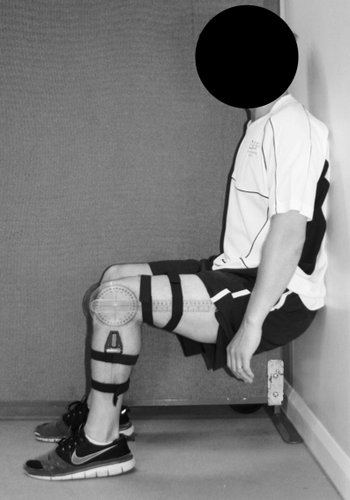-
Home
-
About JCTR
-
Gold Open Access
-
Issues
-
Editorial board
-
Author guidelines
-
Publication fees
-
Online first
-
Special issues
-
News
-
Publication ethics
-
Partners
-
Submit your manuscript
-
Submit your review report
-
Editorial Office
-

This work is licensed under a Creative Commons Attribution-NonCommercial 4.0 International License. ISSN print: 2382-6533 ISSN online: 2424-810X
Volume 7 issue 2
Validity and reliability of RPE as a measure of intensity during isometric wall squat exercise
John W. D. Lea, Jamie M. O’Driscoll, Damian A. Coleman & Jonathan D. Wiles*
Lea et al. J Clin Transl Res 2021; 7(2):7
Published online: March 24, 2021
Abstract
Background and Aims: Isometric exercise (IE), including wall squat training, has been shown to be effective at reducing resting blood pressure (BP). Rating of perceived exertion (RPE) is also widely used as an accessible additional measure of IE intensity. Despite this, no RPE scales have been specifically designed for use with IE and it is not clear whether RPE is sensitive enough to distinguish between different lower limb IE workloads. Therefore, the aims of this study were to assess the validity and reliability of RPE as a measure of IE intensity (workload) and physiological exertion (Heart rate and BP), and to examine whether RPE is able to discern differences in wall squat workload (knee angle) at a resolution of 10-degrees, as was previous shown for heart rate (HR) and BP.
Methods: Twenty-nine male participants completed 8 separate isometric wall squat testing sessions, separated by a minimum of 5-hours. Each session consisted of a single 2-minute isometric wall squat test, at one of five randomised workloads (knee joint angles). Three of the knee angles were repeated, a second time, to allow measurements of reliability. Throughout the exercise protocol, HR and BP were recorded continuously; values for each 30-second time-point were calculated as the mean of the proceeding 5-seconds, peak values for the 2-minute bout were taken as the mean results for the final 5-seconds of the bout. Additionally, mean results for the full 2-minute period were calculated. RPE was collected every 30 seconds. Concurrent validity was assessed by correlating RPE results with the criterion measures: Knee joint angle, HR and BP. Differences in RPE were assessed across consecutive workloads and time-points.
Results: There were significant increases in RPE at each consecutive wall squat workload (p < 0.001) and between each consecutive 30-second time point (p < 0.001). Additionally, the RPE results produced a significant inverse relationship with knee angle (r = -0.79; p < 0.001) and significant positive relationships with HR (r = 0.53, p < 0.001) and BP (systolic: r = 0.77; diastolic: r = 0.62; mean arterial pressure: r = 0.70, p < 0.001).
Conclusion: RPE provides a valid and reliable measure of isometric wall squat intensity, physiological exertion, and can discern between knee angles with a resolution of 10°.
Relevance for patients: Patients and practitioners implementing isometric exercise training for arterial blood pressure reduction can use RPE to accurately monitor the intensity of the exercise and the physiological responses.

DOI: http://dx.doi.org/10.18053/jctres.07.202102.007
Author affiliation
School of Human and Life Sciences, Canterbury Christ Church University, Canterbury, United Kingdom
*Corresponding author
Jonathan D. Wiles
Canterbury Christ Church University, North Holmes Road, Canterbury, CT1 1QU, United Kingdom
E-mail: jim.wiles@canterbury.ac.uk
Handling editor:
Michal Heger
Department of Pharmaceutics, Utrecht University, the Netherlands
Department of Pharmaceutics, Jiaxing University Medical College, Zhejiang, China

